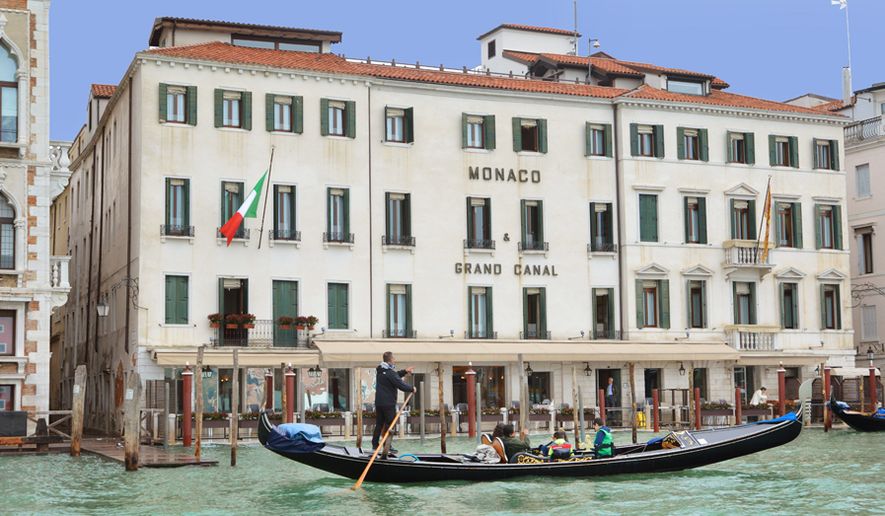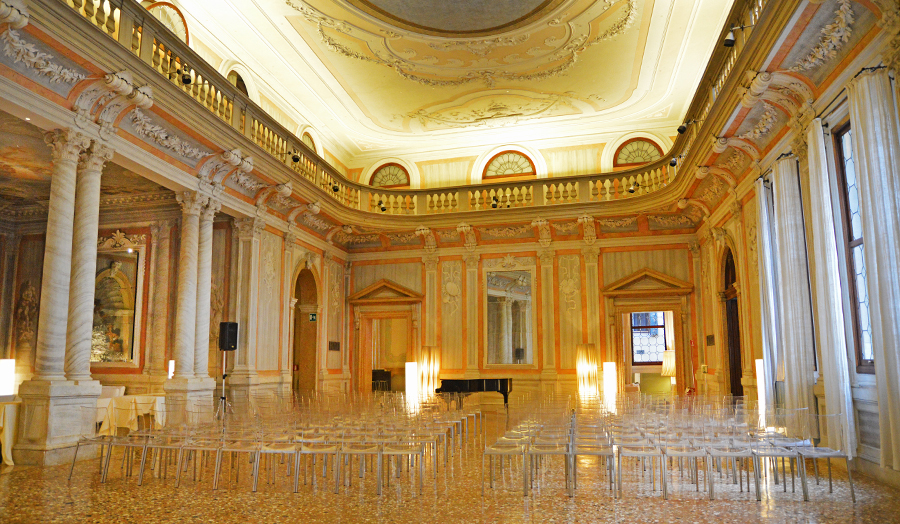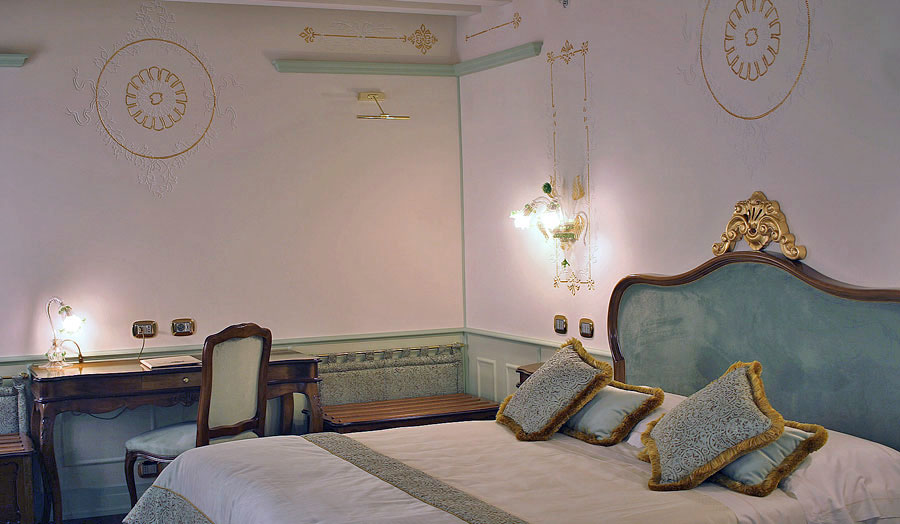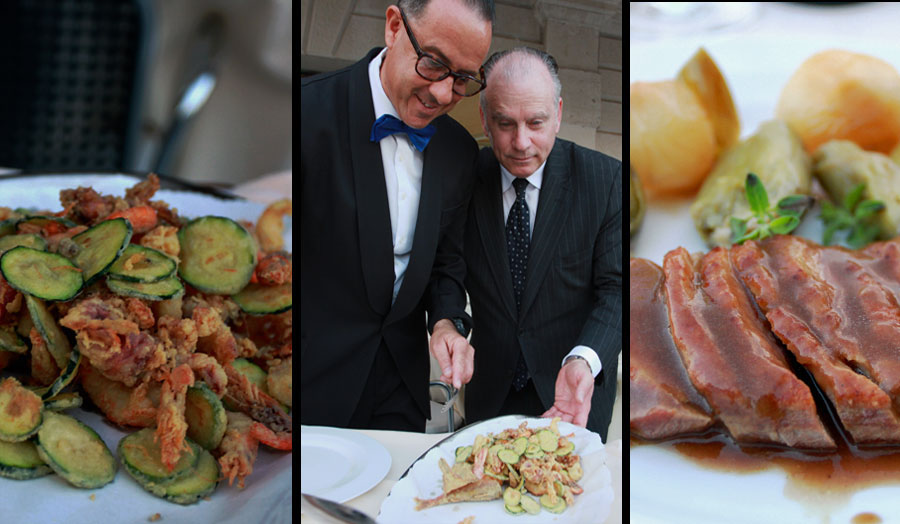Love reigns in Venice through its romantic canals, centuries-old buildings, history and food. Visitors need more than a one- or two-day trip to fully explore its many charms.
And while it is easy to hover near the lagoon as the gondolas and water taxis glide by the front terrace of the historic Hotel Monaco, one only finds those charms off the tourist path — in the city’s neighborhoods, churches and small eateries.
Venetian sestieri
Venice rests among an archipelago of small islands connected by hundreds of bridges and, the old city center is divided into six sestieri, or neighborhoods — Cannaregio (the most populated), Castello (the largest), Dorsoduro, San Marco (the most popular), San Polo and Santa Croce (the only one that permits cars).
St. Mark’s Square, St. Mark’s Basilica and the Ducal Palace, the erstwhile home of the city’s political leader, the doge, beckon most tourists to San Marco.
But that sestiere should not be your only stop, lest you miss some of Venice’s ancient churches, lively cafes and beautiful places in other districts such as Castello and Dorsoduro.
Each neighborhood is remarkable and deserves your attention. Step away from the throngs of San Marco and explore where the Venetians live and play. Or plan a day on Venice’s beaches.
Wherever you may wander, Venice’s art and zest for life will be on brilliant display.
The legend of Casanova
Venice has long been synonymous with romance, but to one of the world’s most notorious seducers, Giacomo Casanova, Venice was his playground.
The city, rich and evocative, was called the pleasure capital of Europe in Casanova’s day, and it was here that he was known for enjoying good food, wine and women — not necessarily in that order. Historical records tell us that Casanova was described as “quick-witted with an intense appetite for knowledge and an inquisitive mind.”
Not always a gigolo and gambler, Casanova also pursued careers in medicine, the law, military service and even as a church cleric. Returning broke from his military pursuits, Casanova became a violinist at the San Samuele Theater, demolished in 1894.
The theater where Casanova performed no longer exists, but the gambling room where he toyed with the hearts of women still stands. Today, it looks very much as it did when Casanova plied the art of seduction. Legend says his skills at enticing young, and not so young, women were gleaned from Venice’s erotic poet, Giorgio Baffo.
In Venice, Casanova frequented the Il Ridotto, or private room, that is now a part of the Hotel Monaco. The room today, as it has been throughout history, boasts a balcony walkway, walls and ceilings richly decorated in imitation colored marble, mirrors and elaborate festoons of flowers, ribbons, scrolls and shells in stucco.
Gambling was frowned upon in Christian-ruled Venice, so Casanova wore a mask, as all patrons did, and gambled in this room while waiting for his next conquest. When being pursued, he often escaped down a narrow, winding staircase to the first floor and a gondola to whisk him away.
Luxury at the Hotel Monaco
Casanova would approve of the recently refurbished Hotel Monaco and Il Ridotto: Opulence creates comfortable spaces to seduce a paramour.
The luxurious hotel is bathed in soothing, cream tones; gold accents; and warm sage green. A nod to the present, rooms feature USB ports if you need to plug in. Showers and baths are large enough for two. Murano glass wall sconces, and chandeliers add a bit of Venetian bellezza and romanza to your stay.
Take time to enjoy the art within the Hotel Monaco, sipping a Bellini in the expansive lobby while watching the people bustle by.
On the hotel’s Grand Canal restaurant’s outdoor terrace, it is easy to spend an entire day marveling at the life of Venice.
The Church of Saint Mary of Health
The view of where the Grand and Giudecca canals meet to create St. Mark’s Basin is breathtaking. The island across the canal is the Dorsoduro district, accessed by the ferry cabs or a walk across the famed Rialto Bridge.
From the Hotel Monaco terrace, look across the canal to 17th-century baroque Santa Maria della Salute, or the Church of Saint Mary of Health.
The church was decreed during the plague of the 1630s, in which 46,000 Venetians died. Venetians attributed their recovery to the divine intervention of Saint Mary of Health and built the church in her honor. Completed in the 1680s, the church sits at the top of Dorsoduro, next to the former custom house, now an art museum.
The church demands attention with its Palladian façades, the grandest facing across the Grand Canal. Double domes and bell towers at the back, the church is constructed of Istrian stone, limestone from the Istrian Coast and marmorino, brick covered with marble dust. As the sun sets, the building takes on new life with the changing light, as does the statue of Mary blessing the city that sits atop the tallest dome.
The Virgin Mary with the Christ child is atop the main pediment facing the Grand Canal. The pediment also features statues of St. George, St. Theodore, the Evangelists, the Prophets and Judith with the head of Holofernes, the Assyrian general who threatened to destroy her home of the city of Bethulia.
The church’s interior is simple yet imposing, with its high dome that infuses the interior with light that plays on the intricately inlaid marble floor. Beneath the dome stands the High Altar to Santa Maria della Salute, surrounded by six smaller chapels including the incredible golden altar dedicated to St. Anthony.
The Grand Canal Restaurant
Outside The Hotel Monaco & Grand Canal, activity is nonstop as gondoliers call for fares, shouting good-naturedly to other boats. The colorful activity and cooling breezes off the basin make the Grand Canal Restaurant Venice’s go-to Michelin Guide dining establishment.
Every meal is luxuriant, with breakfasts rich with pastries, freshly squeezed juice, rich coffee and fruit. Lunch means freshly brewed iced tea and a chicken salad sandwich leisurely enjoyed during the highest heat of the day.
Dinner maitre d’s are gently professional, warm and welcoming. Traditional Venetian dishes mirror the bounty of the Adriatic Sea and the fertile lands of Northern Italy.
An unforgettable feast begins with a salmon tartar served with cream and drops of Modena vinegar. Freshly made house pasta with white beans is perfectly balanced with a rich, red sauce seductively clinging to strands of linguini. With this plate, the chef creates a dish that pays homage to Venice’s culinary history.
A delicately breaded dish of shrimp, fish and zucchini is light, filled with flavor and the perfect amount of saltiness. And it is large enough to share.
A remarkable beef filet with capers is served tableside, allowing for the seductive drizzle of gravy, sieved to a silky, mouth-watering perfection. The beef, perfectly prepared, is served with whole potato wedges and root vegetables. A bottle of Villa Minelli Blanco Pino Grigio e Chardonnay pairs perfectly with the meal.
Plan a memorable day in Venice loving life with the love of your life at the Hotel Monaco.
• Jacquie Kubin is an award-winning travel and food writer and travel editor at Communities Digital News.
• Jacquie Kubin can be reached at jmk58@comcast.net.







Please read our comment policy before commenting.